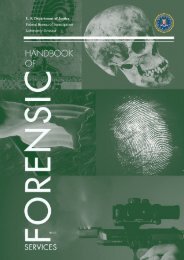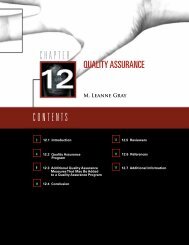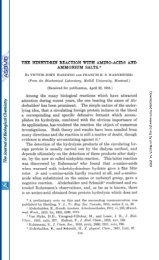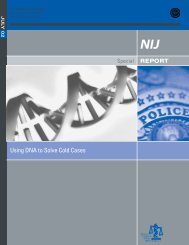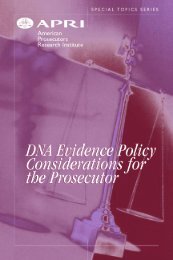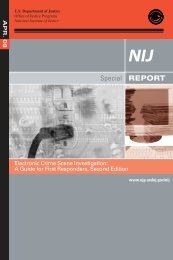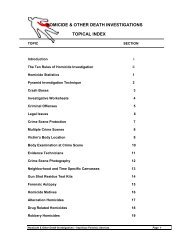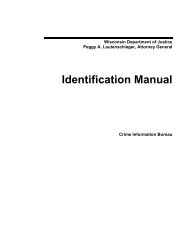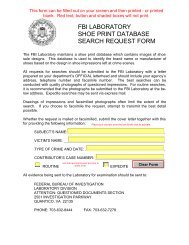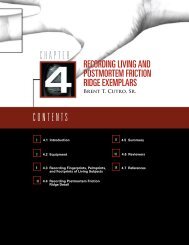Mass Fatality Incidents: A Guide for Forensic Identification
Mass Fatality Incidents: A Guide for Forensic Identification
Mass Fatality Incidents: A Guide for Forensic Identification
- No tags were found...
You also want an ePaper? Increase the reach of your titles
YUMPU automatically turns print PDFs into web optimized ePapers that Google loves.
PrefaceMost government agencies concernedwith public safety have disaster plans.Although some are linked to other agencies’plans, others are not. In the event ofmass fatalities, the local medical examineror coroner should already have in place aplan to identify the victims properly. Thepurpose of this guide is to help the medicalexaminer or coroner prepare that portionof a disaster plan concerned withvictim identification.The statutory duty of the medical examineror coroner does not change as the numberof victims increases. Whether thereare one, a hundred, or thousands of victims,each should be accorded the sameconsideration under the laws governingthe investigation of and response to suddenor violent death.Correct victim identification is essential tosatisfy humanitarian considerations, meetcivil and criminal investigative needs, andidentify victim perpetrators. Equally importantwith identification procedures is theneed to document body location andwound patterns that may be essential inreconstructing the event and determiningits cause. Today, <strong>for</strong>ensic science (e.g.,DNA, fingerprints, <strong>for</strong>ensic anthropology,odontology, radiology) plays a major role invictim identification. If local and State governmentslack the resources to cope witha large number of fatalities, they shouldconsider outside help in the <strong>for</strong>ensic investigationsthat may lead to the identificationof these victims. The specialists broughtin to assist in the investigation should haveexperience, education, and training in the<strong>for</strong>ensic process and should adhere to thehighest scientific and professional standards.It is essential to integrate the medicalexaminer/coroner functions into the establishedemergency response system. Thissystem is concerned with limiting thescope of the disaster and providing criticalfunctions such as fire suppression, rescueof the injured, establishment of an incidentcommand structure, and security.The first section of this guide, “Section 1:Initial Response Considerations,” summarizesthe initial process. The second section,“Section 2: Arriving at the Scene,”discusses the integration of the medicalexaminer/coroner into the process. Fromthe third section, “Section 3: Processingthe Scene,” onward, the focus is on theidentification of the deceased.This guide does not specifically addressthe search and rescue ef<strong>for</strong>ts <strong>for</strong> the livingthat take precedence over the recoveryof the remains, collection of evidence,documentation of the scene, and otheroperational procedures. However, firstresponders and others can use this guideto understand the death investigation process.This guide can assist them in developingoperational tactics <strong>for</strong> routine aswell as mass fatality incidents.The procedures presented in this guidecan help medical examiners and coronersfulfill their legal duties even when thenumber of victims exceeds their agency’sdaily operating capacity.v




